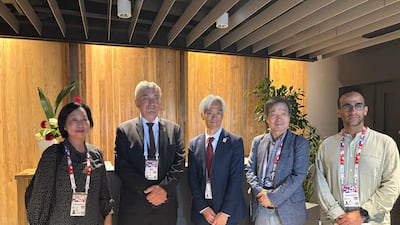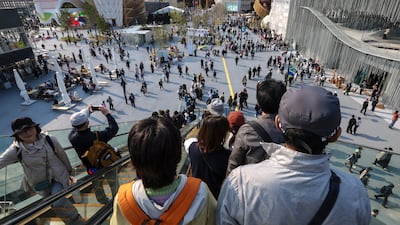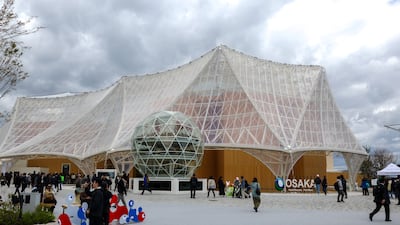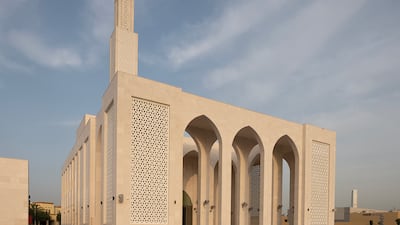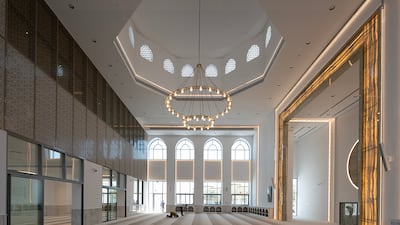An Emirati architect has been selected by the BIE, the governing body for World Expos, to serve on a jury that will award the best pavilions at the Expo 2025 Osaka.
For Ahmed Bukhash, being asked to be part of a nine-member team that will choose the Official Participant Awards is a special honour, as he has deep links to Japan where he spent several years as a postgraduate student.
Emirati architect
Mr Bukhash is also the only Emirati architect to have designed a pavilion at Expo 2020 Dubai. The stark, white tent-like structure is one of the legacies that remains on the Expo City Dubai site, and has been redesigned as a museum on the world’s fair.
“It is honestly a lifelong dream not only to design an Expo pavilion in Dubai but also to be selected as a jury member in Japan, which I call my second home,” Mr Bukhash told The National. “It is a true privilege.”
Heartfelt message
Mr Bukhash just returned to the UAE after the first round of evaluations last month, when jurors assessed large and medium-sized pavilions at the Osaka Expo. The world's fair has welcomed more than five million visitors since it opened in April, with over 150 nations taking part.
The jurors return to Japan for the second round in October after which the winners will be announced in a ceremony on October 12, a day before the Expo ends.
Pavilions are judged on architecture, interior design and their connection to the Osaka Expo theme "Designing a future society of our lives".
When The National visited the Osaka Expo, some eye-catching pavilions that had people waiting in queues included those of Austria, Bahrain, France, Germany, Switzerland and Uzbekistan.
Mr Bukhash cannot reveal any details about the favourites but says the message must be "heartfelt".
“My advice for anybody travelling to the Expo is please do your own research because you will be surprised that regardless of scale, some of the content in terms of innovation, how to improve people's lives, whether through AI, technology, energy, is productive for our time and age,” he said.
“It shows the beauty of Expo and what every country has to offer.”
The awards for large, medium and small pavilions, and those that use shared spaces, are typically announced at the end of the six-month fair to encourage people to visit all venues. Judges exclude themselves when the team visits their home country pavilion to avoid a conflict of interest.
Shaded spaces
Mr Bukhash was pleased to see a focus on shaded spaces at the Osaka Expo similar to the attempt in Dubai to offer visitors respite from the summer heat.
“I was very happy to see architectural interventions that provide shading, spaces that reflect a kind of canopy system around the pavilion,” he said. “Our main challenge is the changing global climate. That is a problem that we are facing as we experience higher than normal exposure to the heat.”
As a student, Mr Bukhash studied the Japanese language for a year in Japan in 2003 before completing a master’s degree in architecture at the Kyoto Institute of Technology.
His education there is reflected in the work handled by Archidentity, the design studio he runs in Dubai.

Clean, uncluttered lines dominate residential villa, mosque projects and work on a Japanese school in Dubai. People-centric designs that adapt to the local environment are key.
“It's no longer about having extraordinary energy boosted into air-conditioning systems, but you really need to look at passive solutions to provide shading and a comfortable temperature,” Mr Bukhash said.
“A natural ventilation system protects us from the heat and allows for the natural flow of wind.”
Legacy design
Mr Bukhash was also a judge for the Dubai Expo 2020 where the Saudi, Dutch, Singaporean and Japanese pavilions were among those awarded for architectural and design excellence.
Working with the Expo in Dubai had an impact as he always factors in how the space can be used in the future.
“We always try to consider the past and future requirements,” he said. “When we design buildings, we think of how to expand its lifespan, so that as the family expands, so does the building with them.
"This is something we learnt when designing the Expo pavilion when we had to look at the immediate requirements and the legacy of what will happen post-Expo.”
Mr Bukhash's message to young students is to embrace technology, design with sensitivity and always think of the future.
“Technology is the way forward to provide innovation and it does not matter whether the client has an open or restricted budget, you should always design with sensitivity, care and efficiency,” he said. “You should consider the legacy so that it serves well in terms of any expansion in the future.”
